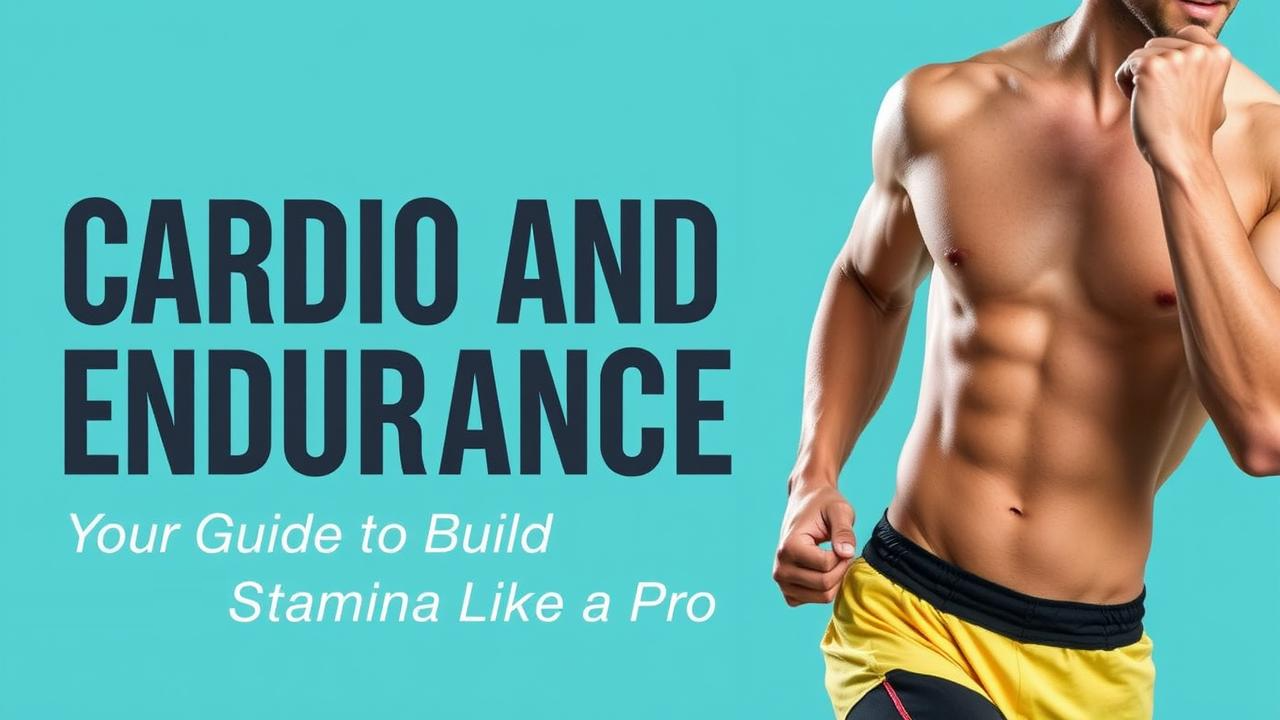Your Guide to Build Stamina Like a Pro
At the mention of “Cardio and Endurance” most people’s minds instantly swoop in to long, punishing treadmill runs or workouts that seem to go on for a lifetime. But cardio and endurance training is not just about relentless pace-logging; it’s a process through which to make the heart stronger and more energetic and train to push through those physical limits (preferably without feeling like you are about to collapse!).
Therefore, whether new to this world of fitness or just an old undergrown hamster within a gym cell, some cardio and endurance training should have a prime spot in your workout plan. And it’s a whole lot more versatile—and fun—than you may have thought! Let’s break it down and find out how to make your fitness and stamina soar without turning every second into a nasty, nasty torture.
What is Cardio?
Cardio exercise is any exercise that stimulates heart rate. It focuses on making the heart, lungs, and circulatory system more efficient by pushing the body to a limit, whether it be running, cycling, swimming, brisk walking, dancing as if no one is watching-you know the drill!
What is Endurance?
Endurance shows how much time your body can withstand an activity. Endurance can be built isn’t just running long distance: it may be biking; you may need to build endurance for a sport; even to hike long without feeling like your legs might give out on you. When paired together, endurance training will change the game, and thus enhance your fitness, strength, and resilience.
Why Is Cardio and Endurance Training Important?
To put it plainly, the heart is the Grand Buddha of the body. Anything to make it stronger will benefit every other aspect of health. Just to name a few, cardio and endurance training offer the following perks:

1. Strengthens Your Heart
Your heart is a muscle, and like any other muscle, it gets stronger when used. Cardio makes your blood circulate better, lowers blood pressure, and decreases your chances of developing heart disease–in essence a way to say “Hey, I’ve got your back!” to you heart!
2. Burns Calories and Aids in Weight Loss
Cardio burns calories whether you are walking, jogging, or Zumba-ing. And if you combine it with a healthy diet, you will have no trouble meeting your weight goals, without crash diets or shortcuts.
3. Provides an Energy Boost
Confusingly enough, burning energy in a cardio workout gives you even more energy over time. It helps the body process oxygen properly, thus leaving less fatigue for conducting normal tasks.
4. Extremely Good for Your Mental Health
“Ever heard of the runner’s high?” Endorphins—the feel-good chemicals released during your exercise—are what give you that amazing feeling after a great workout. Apparently cardio is a natural way to relieve stress, kick anxiety in the face, and picked up your mood.
5. Improves Stamina for Everyday Activities
Keeping up with the kids, going on hikes with friends, dancing the night away—endurance training means you no longer tire out so easily. All of a sudden, those steps at work won’t look like a scary mountain to be climbed!
So You Wanna Know “How to Start Cardio and Endurance Training?”
You don’t need fancy equipment for Cardio and Endurance: Your Guide to Build Stamina Like a Pro, a good three hours of time or a personal trainer to start. The main part is to find something you love doing to start with. Here’s a super-simple roadmap to do just that:

1. Keep It Simple
If cardio training is totally new to you, no need to lock yourself for an hour in one go! Just take that 10-15 minute walk/jog/bike ride. It’s not meant to be a holy rite. Just be at something that feels good for you.
2. Try Different Activities
Not a runner? That’s fine! Swimming, kickboxing, or attending dance classes might do the trick for you. it so fun, people can find something to call their own. Just keep trying stuff until something sparks enthusiasm in you.
3. Try Interval Training
Interval training is helpful because it keeps you moving. This enables you to alternate between periods of energy (30 seconds of sprinting) followed by reduced activity (1 minute of walking). Not only is this a fast workout, but it is very effective in developing endurance.
4. Make Sure to Listen to Your Body
No pushing yourself! It is totally fine to start difficultly, especially when you are a beginning. It is absolutely fine to take it slow, particularly if you are just starting off. Slow it down if you find that you are gasping for air or if you are having pain. You will accumulate the endurance over time.
5. Water and Nutrition:
Hydrate and Fuel Your Body Like you wouldn’t go on a journey when your tank is nearly empty, you can’t expect to overload yourself on exercise without fueling your body! Drinking enough water and having a whole foods-based diet will help with your pursuits to develop your stamina. Some complex carbohydrate foods, some lean protein, and variety of fruits and vegetables should help to refuel your body.
6. Setting Realistic:
Setting realistic goals should be the best thing you can do to stay motivated. Perhaps it is to run a mile without stopping, or you wish for a longer bike ride. Whatever your goal is, you will want to write it down and celebrate those little goals you achieve in between. Small wins build up!
Final thought
Employ a psychological right attitude, so that cardiovascular endurance training is not seen as a daunting exercise in building one’s stamina, but rather a source of pleasure. Enjoy the journey, savor the little victories in between, and remember that with every tick of the clock you are in fact writing a chapter in the book of your fitness or resilience journey.
Now, come on, put that body in motion and before you know it, professional level of stamina building will be on the horizon. Good luck with the sweating!
Read more blogs with Getwellfit :- Cardio and Endurance


